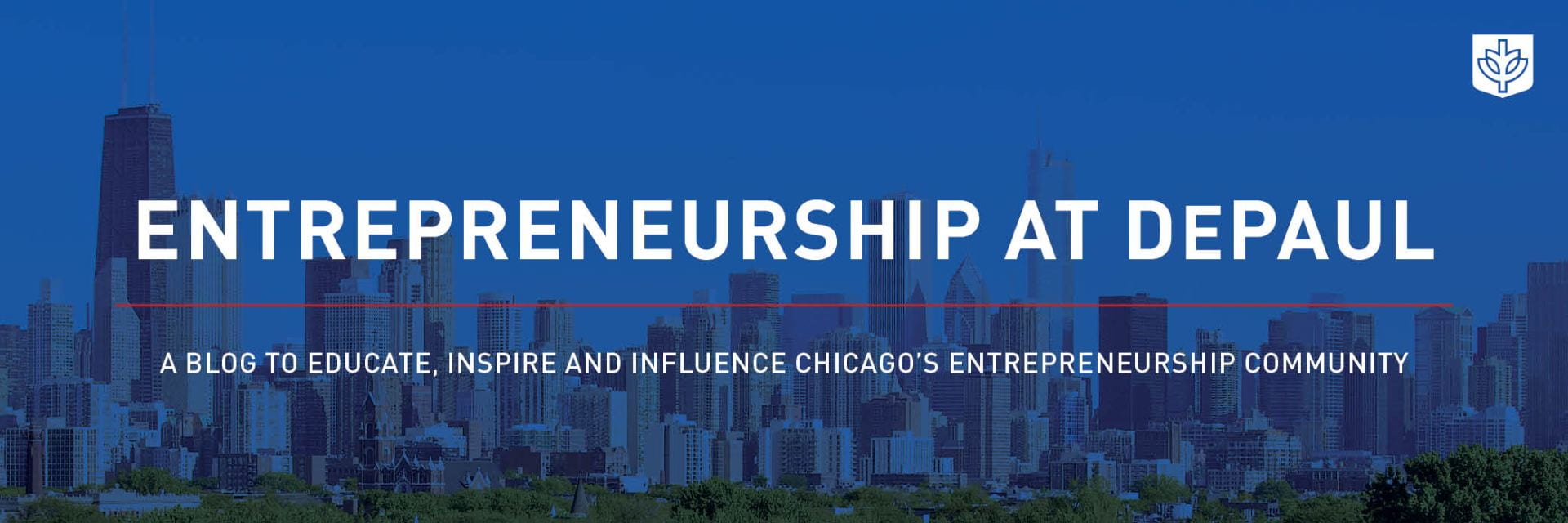I never thought of myself as an entrepreneur. But from a young age, I knew that I loved tackling challenges, creating, problem-solving and connecting dots. With an inventor father and an artistic mother, I was encouraged from a young age to make the power of independent thinking, imagination and creativity a part of my daily life.
Art was my first love, so in hindsight, my path to this point now seems quite clear.
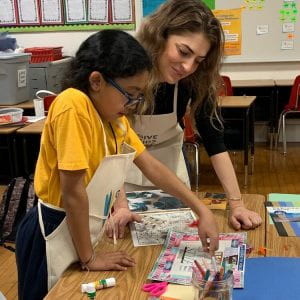
Today, I am the founder & president of Give Kids Art, a 501(c)(3) nonprofit organization that provides arts programs and art kits to underserved children to ignite creative exploration and self-expression. At Give Kids Art, we aim to help children develop stronger self-awareness, self-compassion and creative self-care practices that they can carry with them throughout their lives. We partner with other nonprofits, like the Boys & Girls Clubs of America, to offer free in-person or virtual after-school art programming as well as one-time workshops.
Our activities are all process-based, meaning we focus on the process of creating art and not on making a “beautiful” end product. Our curriculum is developed to enhance social emotional learning, exercise the imagination and creativity, and expose children to a variety of visual arts mediums. You can learn more about our mission, programs, and why art is important at givekidsart.org.
Here are the seven steps that I developed—over the course of many years—to help me find my way through my “existential purpose” problem that led me to start Give Kids Art.
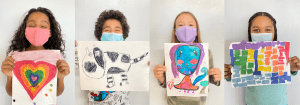
1) Go Back to Your Roots
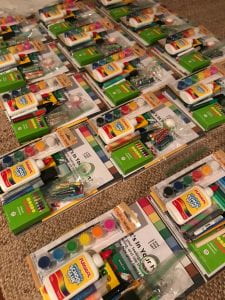
Carl Jung posed, “What did you do as a child that made the hours pass like minutes? Herein lies the key to your earthly pursuits.” Make a list of all the activities you enjoyed at a very young age. If you can’t remember, ask your family members or try to find drawings or writings from your childhood. This exercise helped me remember that art, dancing, imagining, being outdoors and helping others (I was a teacher’s helper since kindergarten) were the sources of so much happiness. I recall Dr. Lawrence Hamer, one of my professors at DePaul University, telling me (on more than one occasion) that he thought I would be a teacher or professor. Dr. Hamer, if you read this, you were right! Reconnecting to my childhood joys helped me reprioritize my adult pursuits.
2) Figure Out What’s Important to You
Start Small – what are your values? What type of lifestyle do you ideally want? For me, some values that come to mind are family, flexibility, expressing creativity and living with heart.
Think Big – next, outline what the world needs. This was hard for me because I’m passionate about many issues, including the environment and healthcare. But working towards defining a purpose requires getting specific. For example, our youth will be challenged with solving future problems, and it is our responsibility to provide them with the creativity and compassion to develop novel, beneficial solutions.
Another one of my favorite quotes is by Howard Thurman, who said, “Don’t ask yourself what the world needs. Ask yourself what makes you come alive, and go do that, because what the world needs is people who have come alive.” While I believe one step in helping someone towards uncovering their purpose is looking at what they passionately believe the world needs, it’s important to find what makes you “come alive”… because if it makes you come alive, you will inspire others to do the same. And this helps us create a better, happier world together. Maybe this is what’s important to you: creating a world where people come alive!
3) Discover What Is In Your Way
Echoing my favorite Picasso quote, I believe every child is an artist! Creativity is something we exercise. Upon reflection, I had to overcome getting educated out of my artistic creativity as a child. It’s common, especially around the ages of 7-10 years old when we start to learn “right” from “wrong” and compare ourselves. I struggled with the self-confidence to pursue the arts professionally. In retrospect, I asked myself why I was so scared. Professional artists simply have the courage to continue putting themselves out there and pursuing their craft. In my 20s, I worked on shedding these barriers and fears for myself. And I, too, learned to create fearlessly. Now “Create Fearlessly” is not only my personal motto, but also a slogan for Give Kids Art.
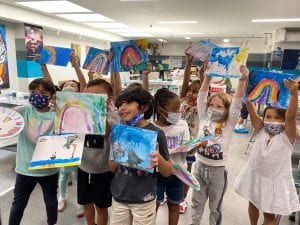
4) Exercise Your Imagination
When it comes to pursuing your purpose, put your imagination to work. Write out all the possible job and career options. Research! I discovered there was an entire profession called Art Therapy that I never knew existed. For instance, I looked at the educational and work requirements, the potential student loan debt, whether or not I really wanted to spend my time clinically diagnosing mental health issues, etc. I dove into numerous options across many disciplines—from graphic design to Pilates and beyond. I looked for novel ways I could combine professions too. I explored other entrepreneurial options and developed a brick-and-mortar art concept in 2019 that I strongly considered pursuing full-time.
I researched, talked to people, took classes and earnestly thought through different career and life paths to narrow down the options and find some clarity. I would follow a path until I ran into a dead end, then I’d turn around and reassess. One way to define entrepreneurship is having the grit not to quit!
5) Pick Solutions that Align with Your Purpose
Out of all the options you imagined, narrow down the list to the ones that align with your purpose. Here are some quick examples: I can inspire fearless creativity in others by 1) putting myself out there (Artist), 2) promoting other’s artworks for wear (For-Profit Art Concept), 3) working with children to help them exercise and nurture their innate artistic selves (Independent, School, or After-School Art Teacher, For-Profit or Non-Profit), 4) working with adults to help them shed barriers to expressing themselves (For-Profit Art Concept), and more.
You don’t have to start a nonprofit in order to give back. Maybe one option is to start a for-profit with a one-to-one giveback model or maybe you believe your product or service will better society. Find something that you believe will make you feel long-term fulfillment; this will carry you, even through the days where you’re exhausted and burnt out.
6) Get Experience and See If It’s A Fit (Volunteer!)
Experience is the best test. After narrowing down my options, I signed up for a weekly art therapy group to experience it as a patient, went to art therapy master’s program open houses, and more. Next, I wanted to figure out if I liked working with adults or children and if I even liked teaching art (versus doing), so I decided to volunteer. In late 2018, I started facilitating an after-school art program at a local Boys & Girls Club. Initially, it was a challenge, but it soon became the best part of my week. I dove in deeper and discovered the serious arts education issue in Los Angeles and throughout California. Only about 39 percent of California students are enrolled in some form of arts education, despite it being required in schools. I continued to research and learn more about our current creativity crisis in America as well as the various scientifically backed benefits of practicing the arts, especially for children’s social, emotional and cognitive development. I was hooked!
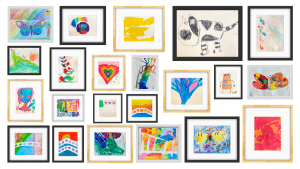
7) Start!
Give your experimenting period enough time for the enthrallment to possibly wear off. If you’re curious and love learning like me, give it even more time. Afterward, if you feel like you can’t give it up and you are happy doing it for free (possibly forever), keep doing it!
I submitted paperwork to start Give Kids Art on Sept. 9, 2019.
It’s been more than two years and a worldwide pandemic later, but Give Kids Art has manifested into my entrepreneurial dream. I’m living my purpose of helping others create fearlessly and express themselves on a daily basis as the nonprofit continues to evolve. Initially, I used my own money to fund Give Kids Art—to pay for legal and setup expenses—and to put a modest initial investment into the nonprofit bank account so as to begin serving children instantly. Family and friends soon began donating after we gained 501(c)(3) status (meaning all donations are tax-deductible), and it has continued growing steadily ever since. Many of our donors now find us through social media.
It was incredibly important to me that donations go directly toward art programming and supplies for our children in need. So, I also work to support myself through my email marketing career, teaching positions at local public schools, as well as through my creative pursuits as an artist.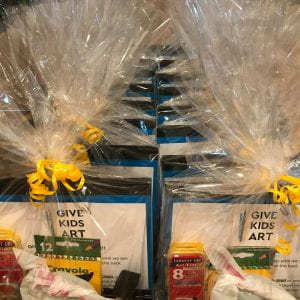
With COVID, we pivoted to virtual programming, which necessitated us making sure every child had the paper, pencils and supplies they needed to create fearlessly from home. Our fundraising efforts have allowed Give Kids Art to deliver nearly 1,500 Art Kits to children in need. We have continued to deliver yearly free art programming about 3 times per week to children through eight-plus nonprofit partners. We helped these children express themselves during a time when they needed an outlet most.
Once you identify your purpose, the way you feel you want to give back to your community or this world, it will make you “come alive” and keep you going.
Entrepreneurial Takeaway
Without setting the intention, I now realize that starting a nonprofit is an entrepreneurial approach for people to gain experience starting a business and to jumpstart a career or life change. It has a low barrier to entry and relatively minimal stress, because it feels good to be doing good things! It’s a great way to develop and gain experience practicing what you want to do. In my case, it was teaching and facilitating arts programs, working with children of various ages and diverse backgrounds, writing curriculum, expressing my own creativity and so much more.
I’ve had doubts along the way, especially when it came to practicalities. But I realized that money will come. If you are passionate about your pursuits and work hard, people will notice. Opportunities will come. Business will come. Wealth (however you define it) will come. Trust in the process and yourself. And never stop creating!
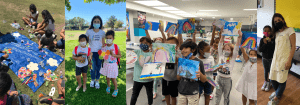
Have questions about starting a nonprofit? Contact Kara at kara@givekidsart.org.
Contributor Bio

Kara Anton is the founder and president of Give Kids Art, a 501(c)(3) nonprofit that provides art programming and art kits to underserved children. She is also the CEO of Nurture, an email marketing consultancy, and a professional artist. A summa cum laude graduate with a 4.0 GPA from DePaul University in Chicago, Anton holds has a bachelors in marketing honors and a minor in anthropology. She is a Certified Therapeutic Art Life Coach (2019), has her Social Emotional Arts (SEA) Certification (2020) through UCLArts & Healing, and currently teaches a variety of art curriculums at local public schools. Through Give Kids Art, Anton hopes to raise awareness to the significant value that creative self-expression has on all aspects of positive youth development. When Anton is not working or teaching, you’ll find her painting in her art studio, dancing, enjoying long walks in nature, or spending time with her fiancé and 13-year-old rescue puppy, Bella.
